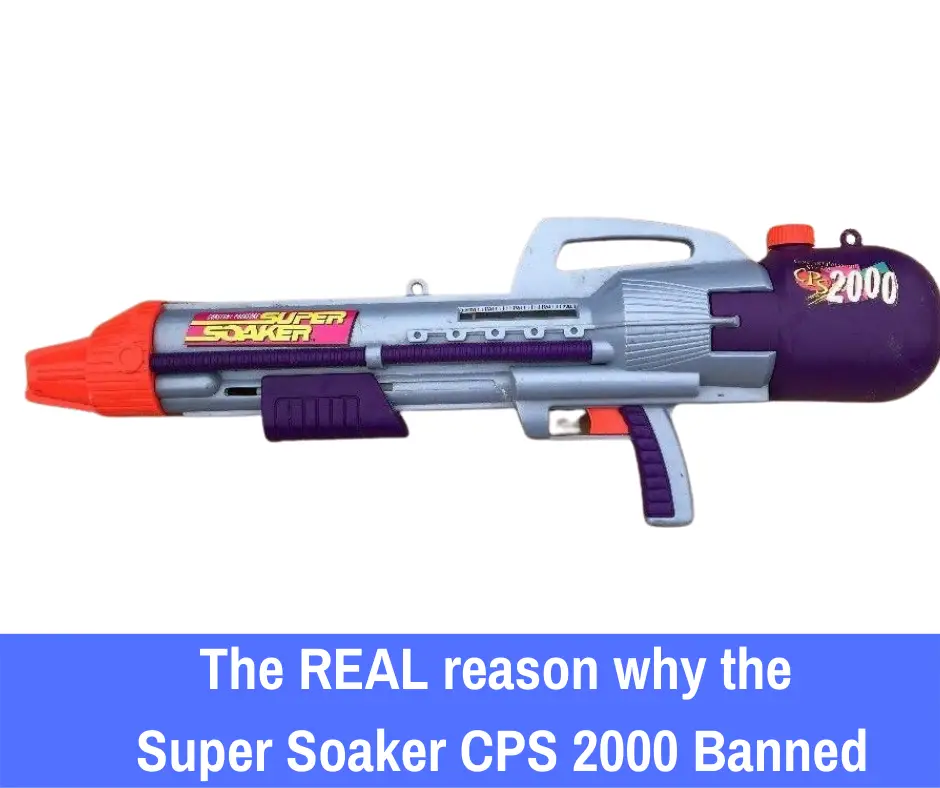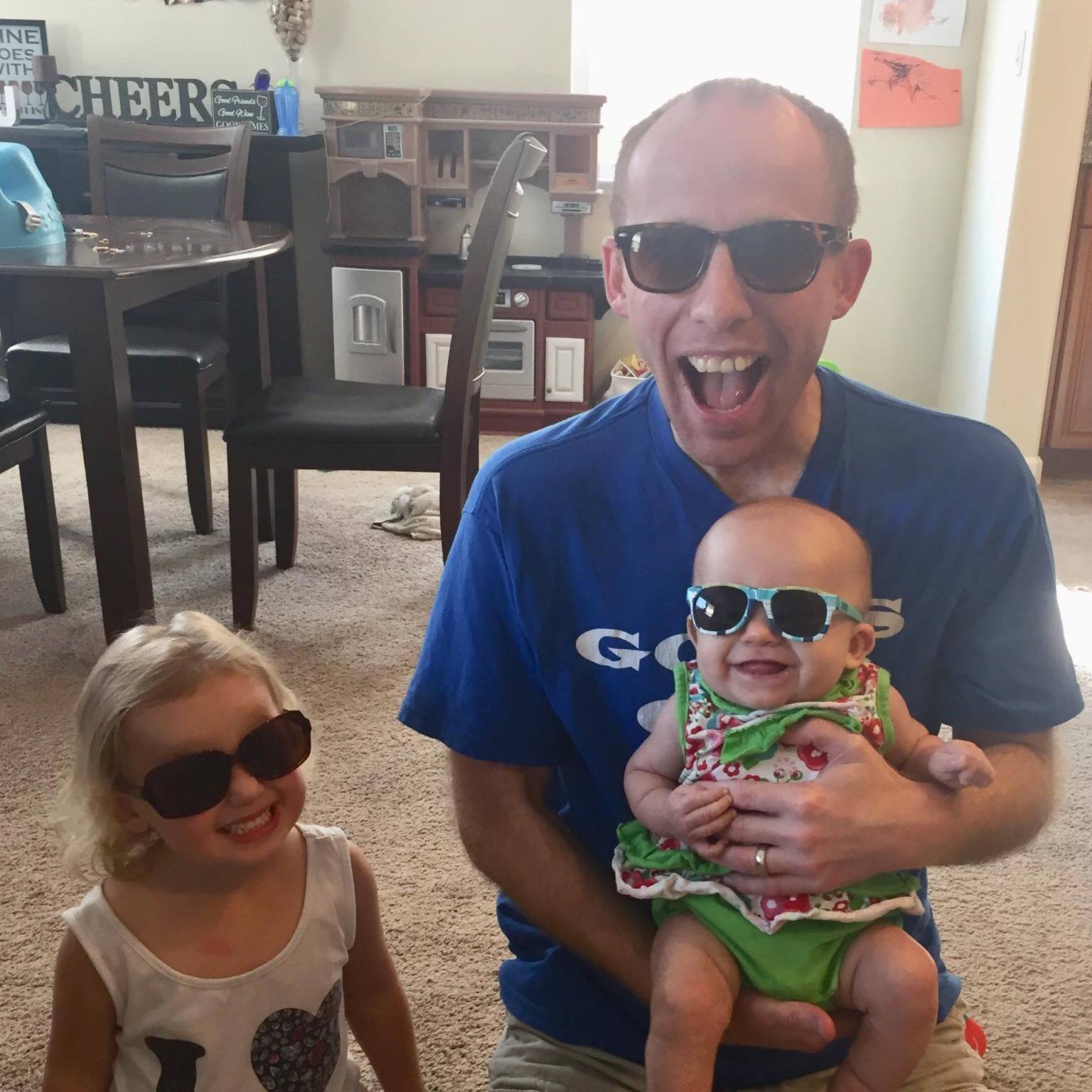By: Jeremy Alden
If there’s one thing we love here at Dart Dudes more than the blasters themselves, it’s some of the stories involving legendary weapons that are no longer on the market.
Some blasters end up being discontinued simply because a better blaster line was developed or the weapon never performed to the standards of the public.
Others may have been a limited release that you could get your hands on if you happened to purchase one or could find one for sale online.
Meanwhile, some blasters have been quietly pulled off the shelves for other reasons that you may only be aware of if you were staying up-to-date with developments of the times.
In this article, we’re going to take a closer look at what this water gun had to offer and why it’s such in high demand among Super Soaker enthusiasts. Let’s dive in!
The True Story Behind Why the Super Soaker CPS 2000 was Banned.

What is the Super Soaker CPS 2000?
The Super Soaker CPS 2000 was a water blaster developed in 1996 under Larami (which was acquired by Hasbro in 1995).
Given that this blaster is vintage, it didn’t feature the same style and design that we are familiar with today. Rather, the Super Soaker CPS 2000 features a more futuristic space design, with a silver body and purple and orange splashes of color around the blaster.
The Super Soaker CPS 2000 was a massive water blaster that came with a 3.1-liter water tank and a 25x size nozzle to deliver the most powerful water pressure on a Nerf Super Soaker gun to date.
In fact, the performance of this Super Soaker has never been bested, which is why it’s so popular even in today’s line of water blasters. Put simply, it’s unlikely that anything will ever top this weapon.
How Did It Come to Be?
Interestingly enough, the first iteration of the Super Soaker CPS 2000 wasn’t developed by Larami. In fact, it wasn’t even developed around 1996!
The concept of such a power water blaster was born when, in 1982, NASA engineer Lonnie Johnson was working on a cooling pump that relied on water rather than on Freon.
His invention ended up producing great pressure and results, leading him to get the idea of turning his invention into a water blaster.
With the main components developed, Johnson created his own prototype, which eventually landed in the hands of Larami and became one of the first Super Soakers (the Power Drencher) in 1990, only a year after Larami approached Johnson.
As the Super Soaker brand grew in popularity, several new blasters were developed, eventually bringing us to the release of the Super Soaker CPS 2000 in 1996.
Understanding the Reasons for the CPS 2000 and Subsequent Water Gun Disappearances
It wasn’t so much the blaster itself that was the problem.
Rather, societal interventions and negative rumors were mainly the cause behind the change in how water blasters were made and why, even today, they’re still not as powerful as older Super Soakers.
Back when Johnson was looking for companies to take his blaster and produce it on a wider scale, the toy gun industry was still creating products that looked very similar to actual guns.
This created a problem with police officers as they would sometimes confuse these fake guns with real ones. Reportedly, some criminals were also using fake guns in order to pull off real crimes as the two types of weapons were indistinguishable.
As we know, the mixture of bad press and the public reaction’s results in a major change for the topic at hand. Many of the major companies at the time had difficulty recovering from these developments and both toy guns and water guns started fading out.
However, the industry was rejuvenated when Johnson and Larami released the Power Drencher in 1989.
Were there still problems?
Absolutely. In fact, instances of violence didn’t stop after these products were released. Reports of water gun fights being met with real gun violence were making the news.
Another instance saw someone fill a water gun with bleach and cause someone minor burns and even a bus driver was shot with a water gun while at the wheel.
Despite these negative developments and the call for the banning of Super Soakers, the brand survived these occurrences.
What ended up tarnishing the name of the Super Soaker CPS 2000 and getting it quietly removed from production were the reports and rumors of the damage that the water blaster could cause.
Reportedly, direct contact with the water’s stream left players with a stinging sensation on the skin, bruising, and dizziness and blurred vision whenever the blaster’s stream made direct contact with the head.
Ultimately, due to the immense power of the Super Soaker CPS 2000, it was discontinued and eventually banned.
However, it’s arguably the unsubstantiated urban legend that someone’s eye popped out of their socket when the blaster was fired at their head at close range (which is both unbelievable but very memorable).Is the Super Soaker CPS 2000 banned?
The CPS 2000 super soaker was banned in 2001 after numerous injuries cause by the misuse of the product. The CPS 2000 super soaker was powerful enough to break skin and leave bruises. The misuse of the product usually occurred when people would fill the reservoir with water and then hit other people with it as hard as they could.
The CPS 2000 holds 3.1L of water and was the first elastic pressure Super Soaker ever made. It was originally released in 1996
How much is an original Super Soaker worth?
All early models of Super Soakers including the XLs, 50s, CPS 2000s, and Super Soaker 200s sell for an averge of $50-60 and up to a maximum of $150. The Super Soaker 100, for example, is a more expensive model that may sell for around $50. The Splashzooka and 100 are examples of less popular models that go for about $50 when sold secondhand. It appears to be a game of supply and demand with secondhand Super Soakers: the quantity varies from month to month
Did Super Soaker go out of business?
In 2002, Larami shut its doors and sold the Super Soaker brand to Hasbro. In 2010, the two firms collaborated and became known as a Nerf Soaker once again. All we know is that this is great news for any of us who were born in the '90s or weren't around in the past!
The CPS 2000 Will Likely Retain the Title of Most Power Nerf Water Blaster
Even when necessary changes are made to improve safety and increase the acceptance and popularity of a certain toy, controversy almost always wins and sees the target removed.
This is true in the case of the Super Soaker CPS 2000, even at the height of the popularity of the Super Soaker water gun line.
While we likely won’t see the same development in today’s world as modern water guns are low pressure and easy for anyone to use, it’s an interesting bit of history that makes the Super Soaker CPS 2000 one of the most sought-after Super Soakers in the entire line.
If you have one of these sitting around your house, hold onto it as it’s one of the best Super Soakers to date!
CPS 2000 Super Soaker Review

The CPS2000 is an awe-inspiring water cannon due to its size and power, which is a reason why it was banned. With incredible force and velocity, this blaster unleashes a mighty stream of water, providing an exhilarating experience. In the hands of a skilled user, it surpasses larger blasters, leaving them in awe. The CPS 2000 outperforms all Super Soakers to date in terms of range and power.
The Super Soaker CPS 2000, launched in 1996 by Larami Ltd., marked the debut of CPS blasters and stood as the largest single-piece blaster of its time. To this day, it holds the distinction of being arguably the most potent mass-produced water blaster ever created.
Build and Ergonomics

Super Soaker CPS 2000 MK1 – Tested and Works! – ASA College: Florida
The CPS 2000 is crafted from high-quality plastic, exuding a sense of sturdiness without being overly heavy. The pump grip showcases a lightly textured surface, gliding effortlessly along its tracks. The trigger/grip area boasts an open design with a trigger guard, while the long handle accommodates hands of all sizes, except for the largest ones.
The alignment between both halves of the shell is exceptional, with virtually no visible ridges where the two parts meet. The top-mounted handle is remarkably sturdy and positioned optimally, ensuring a well-balanced CPS 2000, whether empty or during the filling process.
The CPS 2000 is not only comfortable to hold with both hands, but the addition of shoulder straps enhances its usability for extended periods. By shifting the weight from the arms to the shoulders, it allows for prolonged use without strain. Additionally, once the pressure chamber is filled, a properly adjusted shoulder strap enables one-handed operation. However, due to the CPS 2000's powerful yet brief shot time, it may require repumping after a few blasts. The only drawback lies in the design of the reservoir cap, which lacks a tether to prevent it from getting lost when not attached to the water blaster.
The sheer size of this weapon, coupled with the forceful and voluminous stream of water it emits from its nozzle, significantly contributes to its intimidating nature.
Unmatched in terms of water output, the CPS 2000 can drench any target within a 50-foot range, releasing approximately 1 liter (33 ounces) of water. With its 3.1-liter water reservoir, larger than most water weapons, it allows for just over three shots before requiring a refill.
The blaster's power is evident in its impressive output and range statistics. The forceful stream it unleashes generates noticeable kickback for the user. Although the shoulder strap provides some comfort for carrying this weapon, it is certainly not intended for the faint-hearted. The built-in handle offers a convenient grip for refilling.
However, it is crucial to remain cautious of high-output air pressure and the existence of larger, higher-output elastic-pressure-based water blasters in the market.
Pros
A forceful and robust water stream capable of drenching your opponent completely in a matter of seconds. Unlike the less powerful CPS models, the pumping mechanism is securely placed underneath the barrel, ensuring durability and resistance to damage. Nevertheless, it's important to remember that this device is made entirely of plastic.
Cons
It is quite heavy! When fully loaded, it carries a substantial amount of weight. Additionally, it requires a considerable number of pumps (around 20-25) to load the firing chamber, but only a few moments to completely empty it. The limitation of having only one nozzle option means that one cannot opt for a lower setting to conserve ammunition when the water reservoir is running low.
Related Links:

Jeremy A
Dart Dudes
About the Author
Jeremy is the founder of Dart Dudes, the leading resource for parents looking to pick up a Nerf toy for a child. He grew up with his four brothers and two sisters where there was always a Nerf war taking place.
With a focus on safety, Jeremy has helped thousands of parents help chose the right Nerf toy for their kids or grandkids. He lives in California with his wife and family. Learn more about me. - You can email me jeremy@dartdudes.com

